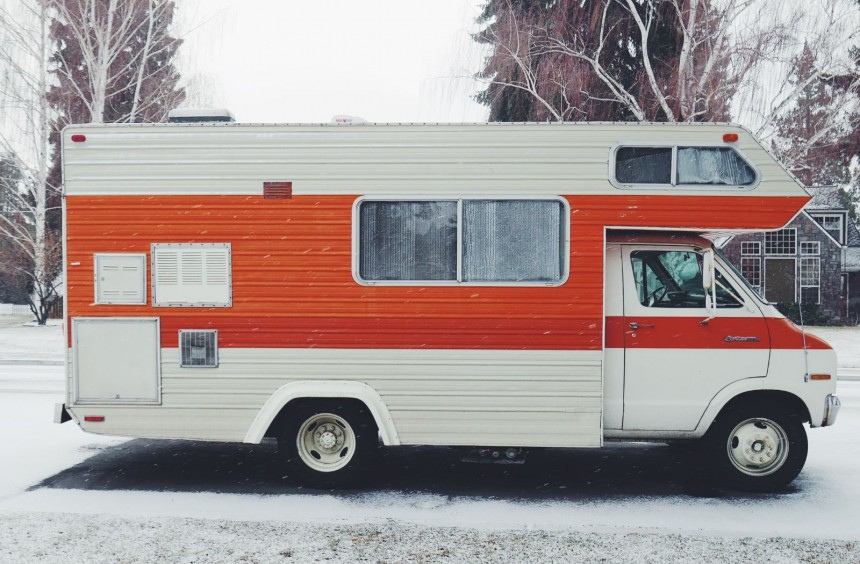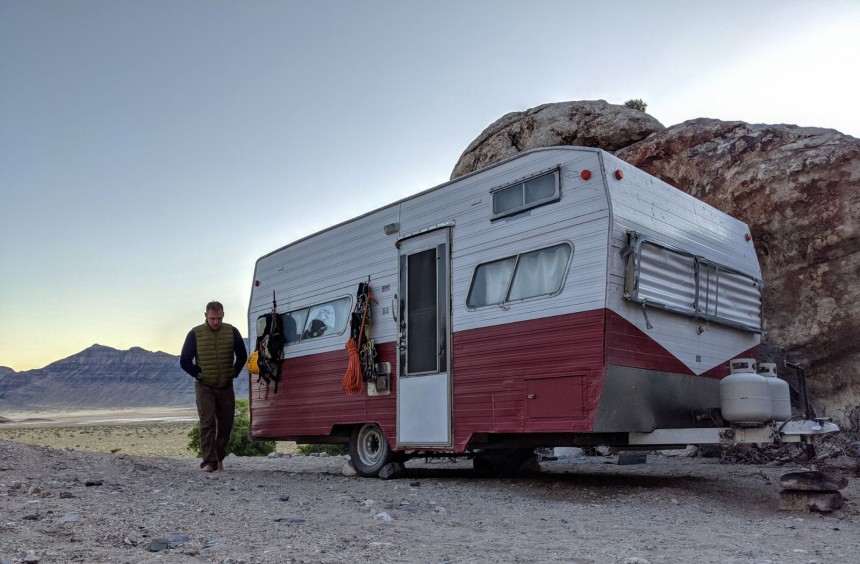Few things can compete with the RV lifestyle in terms of freedom and adventure, especially through these difficult times. If you are thinking about buying a used one but don’t know where to begin, here are six essential steps you should take to make your endeavor a lot easier.
Because of the ongoing health crisis that has changed the way we live and travel, many people have turned their attention to recreational vehicles (RVs). They offer an unparalleled level of flexibility and freedom, all while solving the problem of social distancing.
However, buying an RV is not an easy task, especially if you decide to go for a used one. Sure, you’ll end up saving loads of money over a brand-new model but there is an overwhelming number of things that could go wrong, particularly with older and bigger models.
While you can’t prepare for every unforeseen situation, there are some basic things you can do before you actually purchase a used RV to make sure you end up making the right choice.
Start with research. This first tip is especially important if you’re new to RVing. There are many forums and websites out there where you can learn about the lifestyle, discover the te types of motorized RVs or trailers that you can buy, and connect with experienced owners. The process will become easier once you narrow down your search to a specific model and you get some advice from seasoned RVers on the most common issues you can encounter.
Set a Budget. Once you’ve done your homework, you can move on to the next step. A big motorhome is what everyone dreams about but even a used one often comes with a six-figure price tag so it’s important to be realistic.
Also, when planning your budget consider that a used RV might require some repairs or upgrades. If, for example, you have $13,000 at your disposal and you plan on using it once or twice a year for summer trips, a pop-up trailer in the $8,000-$10,000 range could be a perfect choice. The remaining money can be used for some new tires, comfier mattresses, or a premium roadside assistance plan.
Widen your search. While browsing dealership websites can be the most convenient way to shop for a used RV, it isn’t the cheapest. You can also contact private sellers by browsing forums, sites like Craiglist or eBay, or by joining local Facebook groups. With time and patience, you can find a great deal that exceeds what you would normally get from a dealership.
Check that every feature works. Once you found one that fits your needs and budget, it’s time to check it out. This is where the research you’ve done will come in handy. Check that every feature works as intended and pay attention to the common issues encountered by owners of this particular model.
Look for signs of damage and ask for maintenance records. Depending on the complexity of the model as well as its age, many things can go wrong, so you have to thoroughly check every nook and cranny. Look for cracks, tears, or any signs of questionable repairs on all the panels. Also, open every cabinet, look under the sink, around the shower and toilet. If it smells musty or you stumble upon decolorized patches, it means that a leak occurred at some point, so you have to pay special attention to that area.
Furthermore, ask the owner or sales representative about the history of the RV and ask for maintenance records and paperwork. The way it has been stored is also important, so ask if was parked in a garage or left outside exposed to severe weather.
If it’s a motorized RV, check the engine and drivetrain. While a trailer may have its fair share of issues, things get even more complicated with motorized RVs. Getting stuck in the middle of nowhere can be a nightmare so make sure the engine and drivetrain work properly and have been serviced regularly. Pop the hood and look for any signs of oil or coolant leaks and also check these fluids’ levels.
If everything looks good, take it for a test drive and pay attention to any peculiar noises coming from the suspension system or engine compartment. The final step would be to take the vehicle to a certified mechanic for a comprehensive pre-purchase inspection.
Once you’ve sealed the deal, ensured the RV, and purchased a roadside assistance plan, it’s time to take it out into the wild and see how it performs. My advice is to choose a destination that isn’t too remote for your maiden trip. Go to a local campground where you can meet knowledgeable RVers that can assist you if anything goes wrong.
However, buying an RV is not an easy task, especially if you decide to go for a used one. Sure, you’ll end up saving loads of money over a brand-new model but there is an overwhelming number of things that could go wrong, particularly with older and bigger models.
While you can’t prepare for every unforeseen situation, there are some basic things you can do before you actually purchase a used RV to make sure you end up making the right choice.
Start with research. This first tip is especially important if you’re new to RVing. There are many forums and websites out there where you can learn about the lifestyle, discover the te types of motorized RVs or trailers that you can buy, and connect with experienced owners. The process will become easier once you narrow down your search to a specific model and you get some advice from seasoned RVers on the most common issues you can encounter.
Also, when planning your budget consider that a used RV might require some repairs or upgrades. If, for example, you have $13,000 at your disposal and you plan on using it once or twice a year for summer trips, a pop-up trailer in the $8,000-$10,000 range could be a perfect choice. The remaining money can be used for some new tires, comfier mattresses, or a premium roadside assistance plan.
Widen your search. While browsing dealership websites can be the most convenient way to shop for a used RV, it isn’t the cheapest. You can also contact private sellers by browsing forums, sites like Craiglist or eBay, or by joining local Facebook groups. With time and patience, you can find a great deal that exceeds what you would normally get from a dealership.
Check that every feature works. Once you found one that fits your needs and budget, it’s time to check it out. This is where the research you’ve done will come in handy. Check that every feature works as intended and pay attention to the common issues encountered by owners of this particular model.
Furthermore, ask the owner or sales representative about the history of the RV and ask for maintenance records and paperwork. The way it has been stored is also important, so ask if was parked in a garage or left outside exposed to severe weather.
If it’s a motorized RV, check the engine and drivetrain. While a trailer may have its fair share of issues, things get even more complicated with motorized RVs. Getting stuck in the middle of nowhere can be a nightmare so make sure the engine and drivetrain work properly and have been serviced regularly. Pop the hood and look for any signs of oil or coolant leaks and also check these fluids’ levels.
If everything looks good, take it for a test drive and pay attention to any peculiar noises coming from the suspension system or engine compartment. The final step would be to take the vehicle to a certified mechanic for a comprehensive pre-purchase inspection.
Once you’ve sealed the deal, ensured the RV, and purchased a roadside assistance plan, it’s time to take it out into the wild and see how it performs. My advice is to choose a destination that isn’t too remote for your maiden trip. Go to a local campground where you can meet knowledgeable RVers that can assist you if anything goes wrong.









